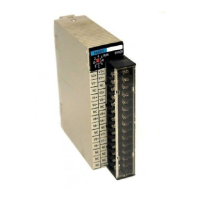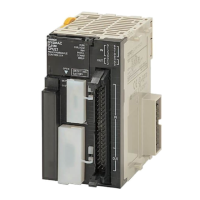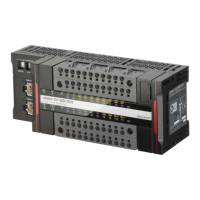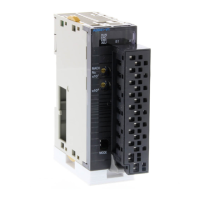93
Overview of Analog I/O Units Section 5-1
5-1-4 Data Processing Flowcharts (Analog Input Units)
Analog Input Value The following math operations can be performed on the external analog input
value. The values obtained after processing (analog input values) can be allo-
cated as I/O for the Master.
• Scaling to desired industry unit
• Moving average processing
Other Operation Results After moving average and scaling processing, the analog input value can be
processed using the following operations. The values after processing are
called peak value, bottom value, top value, valley value, rate of change, and
cumulated value.
• Peak/hold operation
• Top/valley operation
• Rate of change operation
• Cumulative operation (maintenance function)
Analog processing is performed according to the following flowchart.
5-1-5 Selecting Data (Analog Input Units)
After performing math operations, select up to two of the six resulting values
to allocate as I/O, from the analog input value, peak value, bottom value, top
value, valley value, and rate of change. The selected data is referred to as
“analog data” and can be allocated for the Master individually or in combina-
tion with Status Flags. The data is selected using the Setting Tool. Compari-
son operations (comparator function) with four alarm set values can be
performed for analog data.
Input
Moving
average
Scaling
A
A
Analog input
value
Peak/Bottom
Top/Valley
Rate of change
Cumulated
value
Peak
value 2
Top
value 4
Rate of change
value 6
Cumulated
value
Hold Flag
Top/Valley detection timing
(allocated I/O data)
Data Flow
Selection
Conversion
processing
Allocated
I/O data
Processing
results
Bottom
value 3
Valley
value 5

